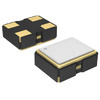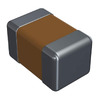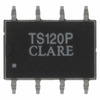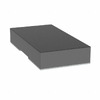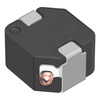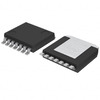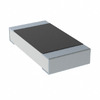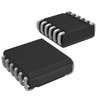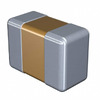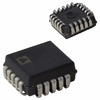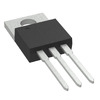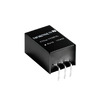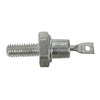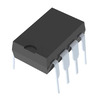Comprehensive Understanding of the 78M05 Chip
The 78M05 is a linear voltage regulator chip primarily used for stabilizing and filtering DC power supplies. It features built-in circuit protection functions to ensure the safe and stable operation of devices. In this article, we will delve into the 78M05 by exploring its pinout and functions, external components, technical highlights, and internal circuitry. This will help you better understand the features and advantages of this device, providing a reference for your subsequent circuit designs and usage.Catalog
Introduction to 78M05
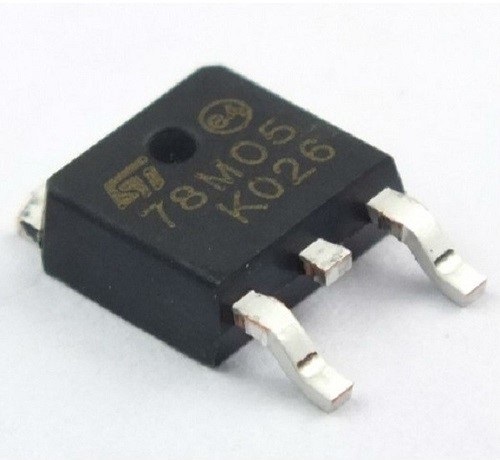
Figure 1: 78M05
The 78M05 is part of the 78 series, a three-terminal positive voltage regulator capable of delivering a maximum output current of 500mA, with an input bias current of 3.2mA, and a maximum input voltage of 35V. Besides stable output and high current capability, the 78M05 also features overheating protection, reducing output current when temperatures exceed safety limits to prevent damage. It offers overload and short-circuit protection by automatically cutting off output to protect the circuit. Widely used in automotive audio systems, LED lighting, and power management circuits in communications and electronic devices, its reliability and protective features make it a preferred choice for various applications.
Alternative and Equivalent Options:
- LM340
- LM340A
78M05 Pin Configuration
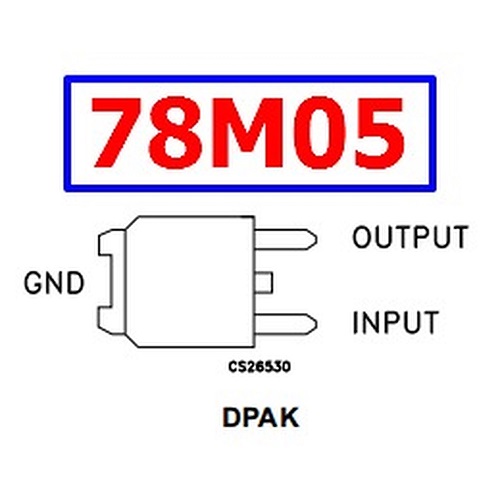
Figure 2: 78M05 Pin Configuration
The 78M05 has three pins: the input pin (Vin), the ground pin (GND), and the output pin (Vout), arranged as follows:
Input Pin (Vin): Receives the input voltage, usually connected to the positive terminal of the power supply.
Ground Pin (GND): For grounding, connected to the negative terminal of the power supply.
Output Pin (Vout): Outputs the stabilized voltage.
External Components of the 78M05
The main external components of the 78M05 include:
Output Filtering Capacitor: Prevents self-oscillation, typically smaller than the input filtering capacitor, chosen from tens to hundreds of microfarads. Connect its positive terminal to the 78M05 output and its negative terminal to the ground.
Input Filtering Capacitor: The positive terminal is connected to the 78M05 input, and the negative terminal is grounded. This component is necessary when the input is a rectified pulsating voltage, with a recommended capacity of more than 1000 microfarads. If the input is DC and a protection diode has been added, this capacitor may be omitted.
Protection Diode: Connected with its positive terminal to the 78M05 output and its negative terminal to the input, its main role is to protect the circuit when the input voltage drops below the output voltage. This diode can be omitted if the circuit includes an input filtering capacitor.
Technical Highlights of the 78M05
Temperature Protection
A core feature of the voltage regulator utilizes an in-built mechanism for autonomous monitoring. When exceeding predefined limits, it initiates an automatic shutdown process.
Short Circuit Protection
A key highlight is its intelligent self-protection against short circuits, quickly cutting off the current to safeguard the chip and other components. This feature effectively enhances device safety and stability.
Safe Operating Area (SOA) Protection for Output Transistors
The 78M05 guards the safe boundaries of output currents with its unique SOA protection, preventing overcurrent damage to output transistors and ensuring stable device operation while extending its lifespan.
Thermal Overload Protection
This built-in mechanism intervenes by cutting off the circuit when detecting abnormally high chip temperatures, preventing further damage to the regulator. This not only extends the lifespan of the regulator but also enhances the overall reliability of the device.
Wide Input Voltage Range
The 78M05's input voltage range is 7V to 30V, catering to various power supply needs, and ensuring stable output for both low and high voltages.
Internal Circuitry of the 78M05

Figure 3: Internal Circuitry of the 78M05
Typical integrated linear regulators usually require only VIN (input voltage), VOUT (output voltage), FB (feedback), and an optional GND (ground) pin. As a typical 3-pin linear regulator, the 78M05's design is notably simple, requiring just an input capacitor and an output capacitor to set the output voltage. Thus, almost all electrical engineers can easily design power supplies using these simple linear regulators.
Quality Assessment of the 78M05
We can judge the quality of the 78M05 from the following aspects:
Voltage Resistance Test: By conducting this test, we ensure that the 78M05 operates within its claimed working voltage range without leaking current or breakdown.
Source Reliability: We typically select the 78M05 from reliable manufacturers and reputable suppliers, ensuring quality control in materials and manufacturing.
Specification Compliance: Checking the specifications of the 78M05, such as ensuring the output voltage is +5V and the input voltage range is between 7V and 25V. Non-compliant chips may lead to unstable output or malfunction.
Temperature and Load Testing: We can assess the 78M05 under different working conditions to assess its stability and reliability. High-quality 78M05 chips should be able to work efficiently and continuously under rated conditions.
Optimizing the Quiescent Power Consumption of the 78M05
We can optimize the quiescent power consumption of the 78M05 in the following ways:
First, optimizing circuit design is paramount. We simplify the circuit by eliminating unnecessary components and wiring, thereby reducing power consumption. Further, by ingeniously designing to reduce voltage drops and current losses in the power lines, we lower power consumption.
She was second, selecting low-power alternatives. There are similar products on the market with lower quiescent power consumption, incorporating these products means further reducing power consumption.
Third, using low-power operating modes. If the 78M05 supports this mode, it switches to a low-power state when high current output is not needed, reducing energy consumption.
Fourth, conducting thermal design. Although the quiescent power consumption is low, the 78M05's efficiency can be affected in high-temperature environments, potentially leading to increased power consumption. Therefore, proper thermal design can help the 78M05 maintain a lower operating temperature, thus maintaining lower power consumption.
Lastly, we focus on the choice of input voltage. The 78M05 requires a minimum input voltage of 7V to operate normally. Reducing the input voltage ensures stable output while effectively reducing power consumption—the higher the input voltage, the greater the current through the regulator, and consequently, the higher the quiescent power consumption.
Frequently Asked Questions [FAQ]
1. Where are voltage regulators used?
Voltage regulators are found in devices such as computer power supplies, where they stabilize the DC voltages used by processors and other components. In automotive alternators and central power station generators, voltage regulators control the output of the power plant.
2. What is the function of the 78M05?
The LM78M05-MIL three-terminal positive voltage regulators feature built-in current limiting, thermal shutdown, and safe area protection, making them virtually immune to damage caused by output overloads. With adequate heat sinking, they can deliver over 0.5A of output current.
3. What is the LM7805 used for?
The LM7805 is one of the most commonly used positive voltage regulators in electronic circuits, used to lower a higher input voltage and provide a stabilized +
About us
ALLELCO LIMITED
Read more
Quick inquiry
Please send an inquiry, we will respond immediately.
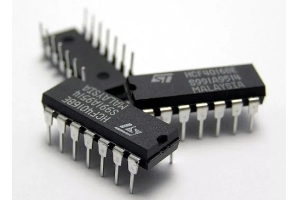
A Comprehensive Guide to DIP Packaging - History, Types, Characteristics, References
on March 28th
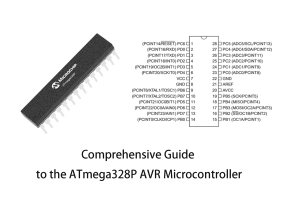
Comprehensive Guide to the ATmega328P AVR Microcontroller
on March 21th
Popular Posts
-

What is GND in the circuit?
on January 1th 3271
-

RJ-45 Connector Guide: RJ-45 Connector Color Codes, Wiring Schemes, R-J45 Applications, RJ-45 Datasheets
on January 1th 2815
-

Understanding Power Supply Voltages in Electronics VCC, VDD, VEE, VSS, and GND
on November 20th 2637
-

Fiber Connector Types: SC Vs LC And LC Vs MTP
on January 1th 2265
-

Comparison Between DB9 and RS232
on January 1th 1882
-

What Is An LR44 Battery?
Electricity, that ubiquitous force, quietly permeates every aspect of our daily lives, from trivial gadgets to life-threatening medical equipment, it plays a silent role. However, truly grasping this energy, especially how to store and efficiently output it, is no easy task. It is against this background that this article will focus on a type of coin cell battery that may seem insignificant on the...on January 1th 1846
-

Understanding the Fundamentals:Inductance Resistance, andCapacitance
In the intricate dance of electrical engineering, a trio of fundamental elements takes center stage: inductance, resistance, and capacitance. Each bears unique traits that dictate the dynamic rhythms of electronic circuits. Here, we embark on a journey to decipher the complexities of these components, to uncover their distinct roles and practical uses within the vast electrical orchestra. Inductan...on January 1th 1806
-

What Is RF and Why Do We Use It?
Radio Frequency (RF) technology is a key part of modern wireless communication, enabling data transmission over long distances without physical connections. This article delves into the basics of RF, explaining how electromagnetic radiation (EMR) makes RF communication possible. We will explore the principles of EMR, the creation and control of RF signals, and their wide-ranging uses. The article ...on January 1th 1800
-

CR2430 Battery Comprehensive Guide: Specifications, Applications and Comparison to CR2032 Batteries
What is CR2430 battery ?Benefits of CR2430 BatteriesNormCR2430 Battery ApplicationsCR2430 EquivalentCR2430 VS CR2032Battery CR2430 SizeWhat to look for when buying the CR2430 and equivalentsData Sheet PDFFrequently Asked Questions Batteries are the heart of small electronic devices. Among the many types available, coin cells play a crucial role, commonly found in calculators, remote controls, and ...on January 1th 1797
-

Comprehensive guide to hFE in transistors
Transistors are crucial components in modern electronic devices, enabling signal amplification and control. This article delves into the knowledge surrounding hFE, including how to select a transistor's hFE value, how to find hFE, and the gain of different types of transistors. Through our exploration of hFE, we gain a deeper understanding of how transistors work and their role in electronic circu...on November 20th 1782




